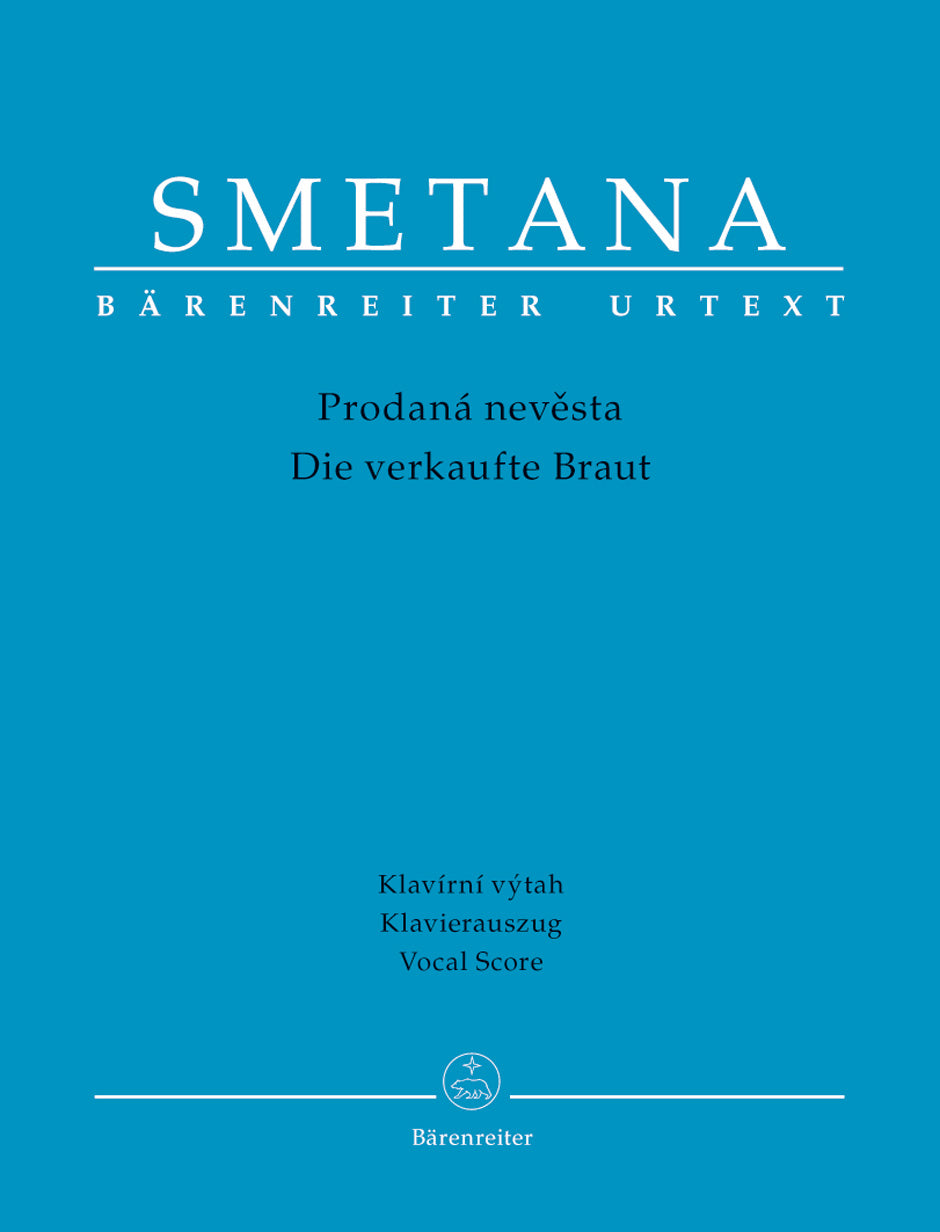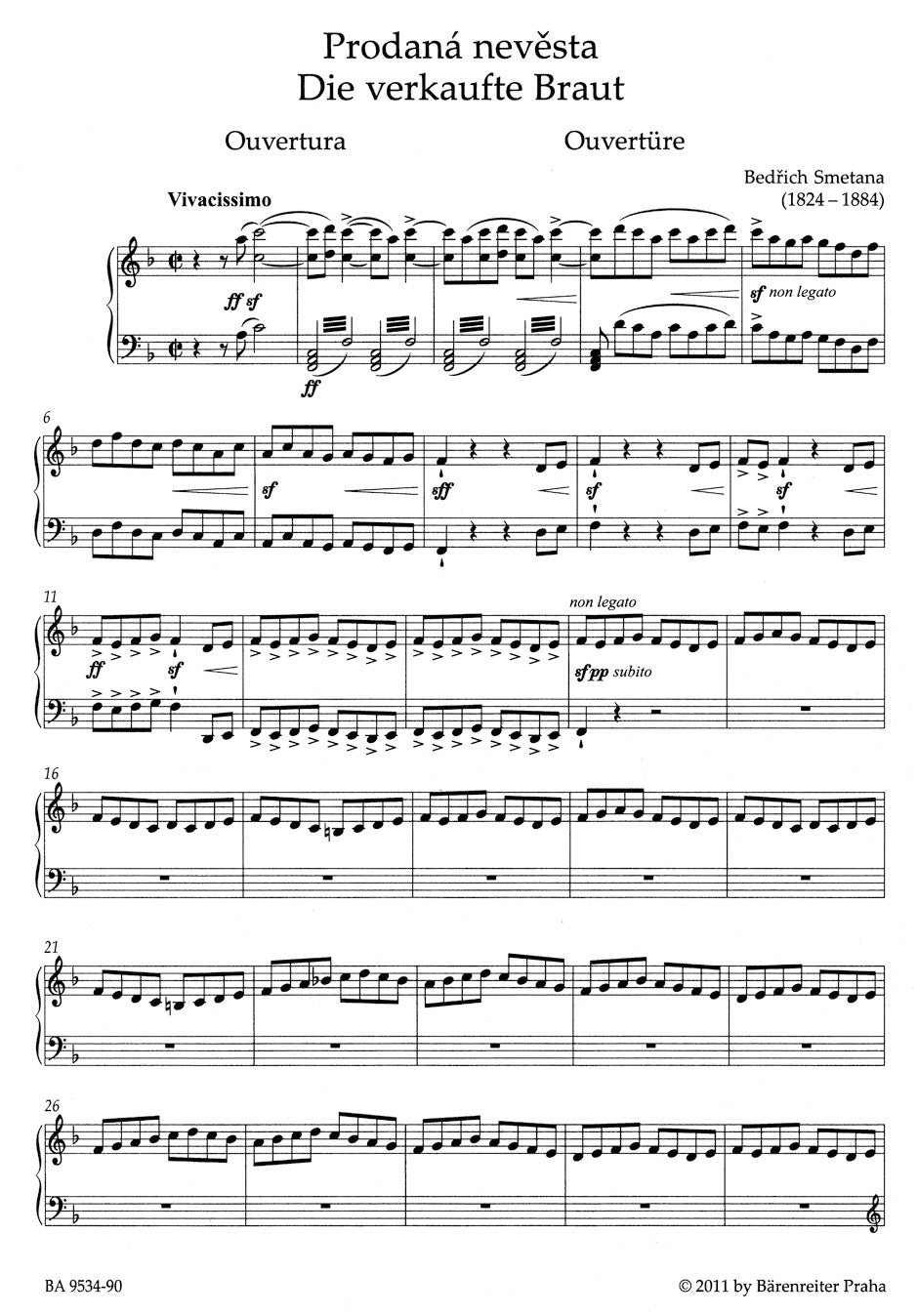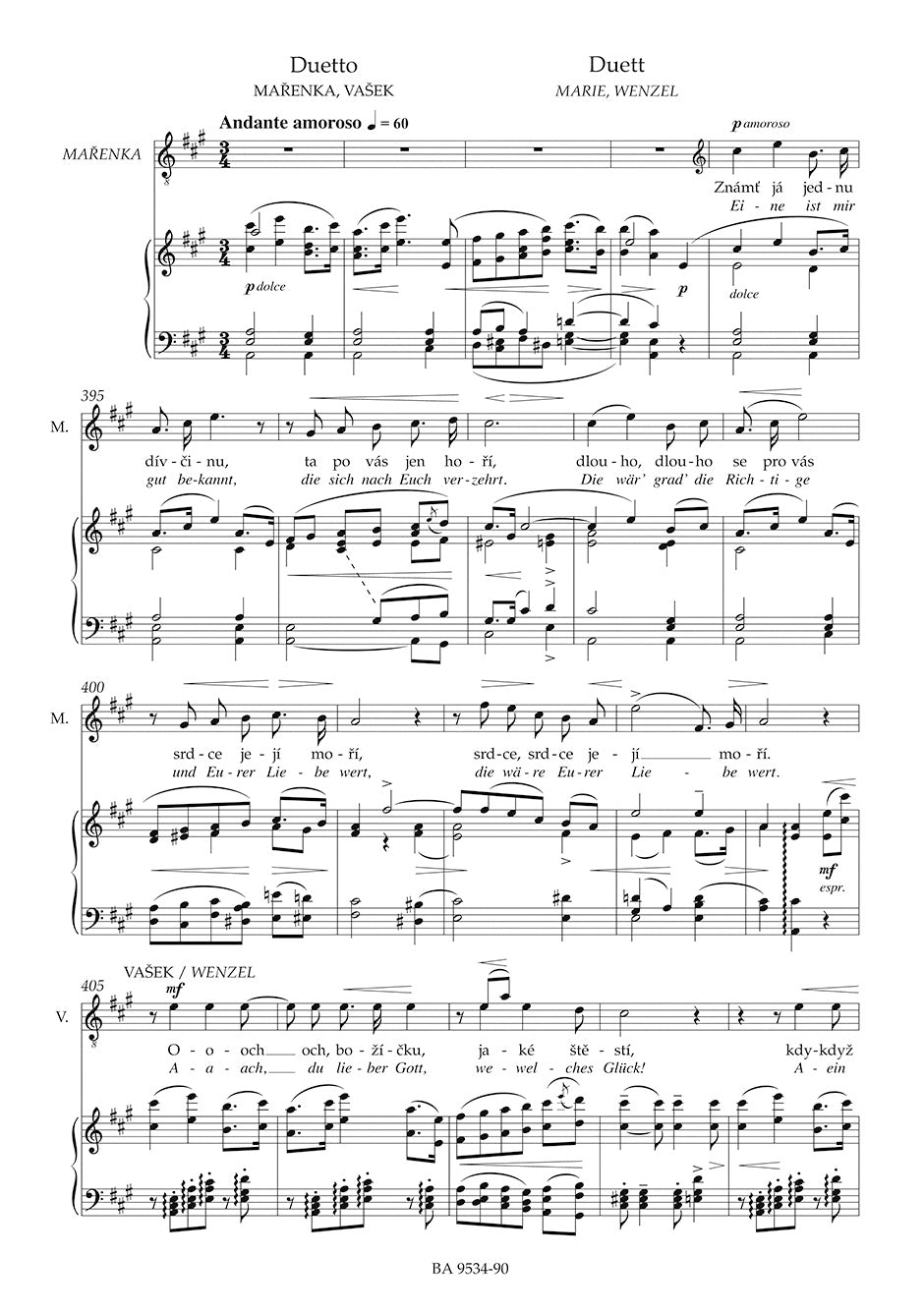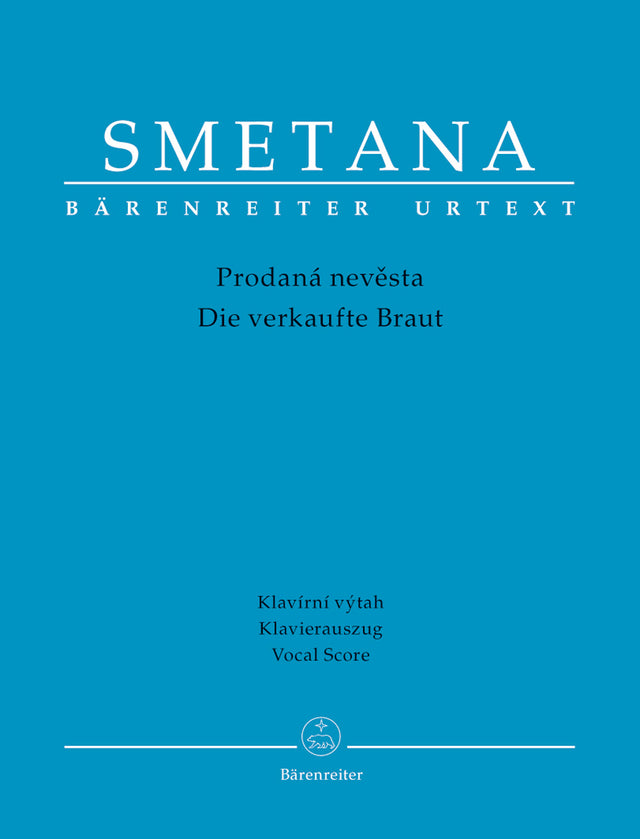Smetana: The Bartered Bride
Prodaná nevěsta
In stock and typically ships within 1 business day.
- Composer: Bedřich Smetana (1824-1884)
- Format: Vocal Score
- Instrumentation (this edition): Piano Reduction, Voice
- Originally for: Opera
- Work: The Bartered Bride (Prodaná nevěsta), JB 1:100, B. 131, T. 93
- Work Languages: Czech, German
- ISMN:
- Size: 7.5 x 10.6 inches
- Pages: 337
- Urtext / Critical Edition
Description
Bedrich Smetana (1824–1884) only began to devote himself intensively to the project of an original opera in Czech at the age of 38. The libretto of "The Bartered Bride", the second of Smetana's nine operas, was written for Smetana by the poet and journalist Karel Sabina. The subject chosen for the comic opera was the story of a pair of lovers in the countryside whose relationship is disapproved of by their parents. It is set during the festival at a village church anniversary.
The final form of the work, which soon came to be regarded as a national opera, was preceded by a relatively difficult genesis.
The opera was written between 1863 and 1865 and was premiered on 30 May 1866 at the Provisional Theatre in Prague, where the composer's last version of the work was also performed in 1870.
Publishers use a lot of words to describe what they sell, and we know it can be confusing. We've tried to be as clear as possible to make sure you get exactly what you are looking for. Below are descriptions of the terms that we use to describe the various formats that music often comes in.
Choral Score
A score for vocalists that only contains the vocal lines. The instrumental parts are not there for reference. Generally, cheaper than a vocal score and requires multiple copies for purchase.
Facsimile
Reproductions of the original hand-written scores from the composer.
Full Score
For ensemble music, this indicates that the edition contains all parts on a single system (there are not separate parts for each player). In larger ensembles, this is for the conductor.
Hardcover
Hardbound. Generally either linen-covered or half-leather.
Orchestral Parts
Similar to a wind set, this is a collection of parts. In the case of strings, the numbers listed are the number of copies included, though generally these are available individually (often with minimum quantities required).
Paperback
When publishers offer multiple bindings (e.g. hardcover) or study scores, this is the "standard" version. If you're planning to play the music, this is probably what you want.
Performance / Playing Score
A score of the music containing all parts on one system, intended for players to share. There are not separate parts for each player.
Set of Parts
For ensemble music, this indicates that there are separate individual parts for each player.
Solo Part with Piano Reduction
For solo pieces with orchestra, this is a version that contains a piano reduction of the orchestra parts. For piano pieces, two copies are typically needed for performance.
Study Score
A small (think choral size) copy of the complete score meant for studying, and not playing. They make great add-ons when learning concertos and small chamber works.
Vocal Score
A score prepared for vocalists that includes the piano/organ part or a reduction of the instrumental parts.
Wind Set
For orchestral music, this is a collection of wind and percussion parts. The specific quantities of each instrument are notated.
With Audio
In addition to the printed music, the edition contains recordings of the pieces. This may be an included CD, or access to files on the internet.
With / Without Fingering (Markings)
Some publishers prepare two copies - a pure Urtext edition that includes no fingering (or bowing) suggestions and a lightly edited version that includes a minimal number of editorial markings.






